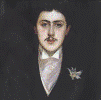Modern Languages and Literatures, Department of

French Language and Literature Papers
Document Type
Article
Date of this Version
January 1988
Abstract
The topos of the window and analogous framing devices is one of the recurrent characteristics of Flaubert's work, and, as examples of this discretionary practice, one need recall only some of the many scenes that are framed by windows: the view of Yonville through the carriage window or the stainedglass window that is, very nearly, La Légende de Saint Julien l'hospitalier. But windows are only incidentally our concern, for as the views of Yvetot and Constantinople equally signify something beyond themselves, so does this topos tie into a larger question, which is the evolution of Flaubert's practice of closure.
The term evolution is meant as a temporal phenomenon only in referring to the order in which the major works were published or were to be published had not Flaubert's death intervened. Within this order (from Madame Bovary to Bouvard et Pécuchet and Le Dictionnaire des idées reçues) there is an obvious movement towards ever greater abstraction of character, narrative form and sequence, and causal and temporal referentiality. The atemporal aspect of this "evolution” is that one can find Flaubert practicing at the same time, and during the composition of a single work, forms that will be either used or deferred, indeed as he deferred some entire projects in favor of others.
Such a "split" practice can be seen in two scenes from Madame Bovary, one kept for publication and the other discarded, which serve as examples of two of the most prominent framing devices that Flaubert will use, with or without the topos of the window. In one case the window is a synchronizing device. In the other it is used to establish a diachronic series of successive views that compose a larger narrative unit. The main point of this essay is to show that the structure of synchronic framing and scenic closure is gradually displaced in importance by the diachronic series of open-ended episodes, each reiterative of the preceding in its failure to be resolved and in its search for a final disclosure that will enclose and close the search. Moreover, this development parallels an increased focalization of narrative point of view as well as the growing intrusion on narrative form of theatrical structures, at least as they were understood and practiced by Flaubert towards the middle of his career.


Comments
Published in French Forum, 13, 1, January, 1988: 57-68. Copyright 1988 French Forum Publishers, Inc. Used by permission.